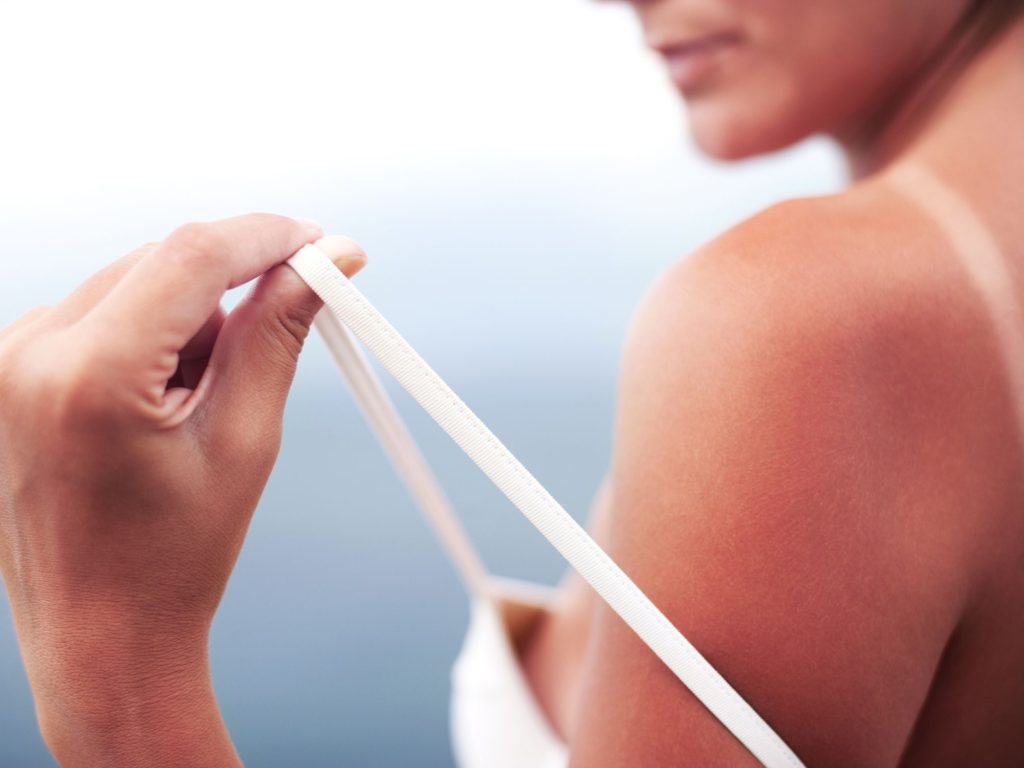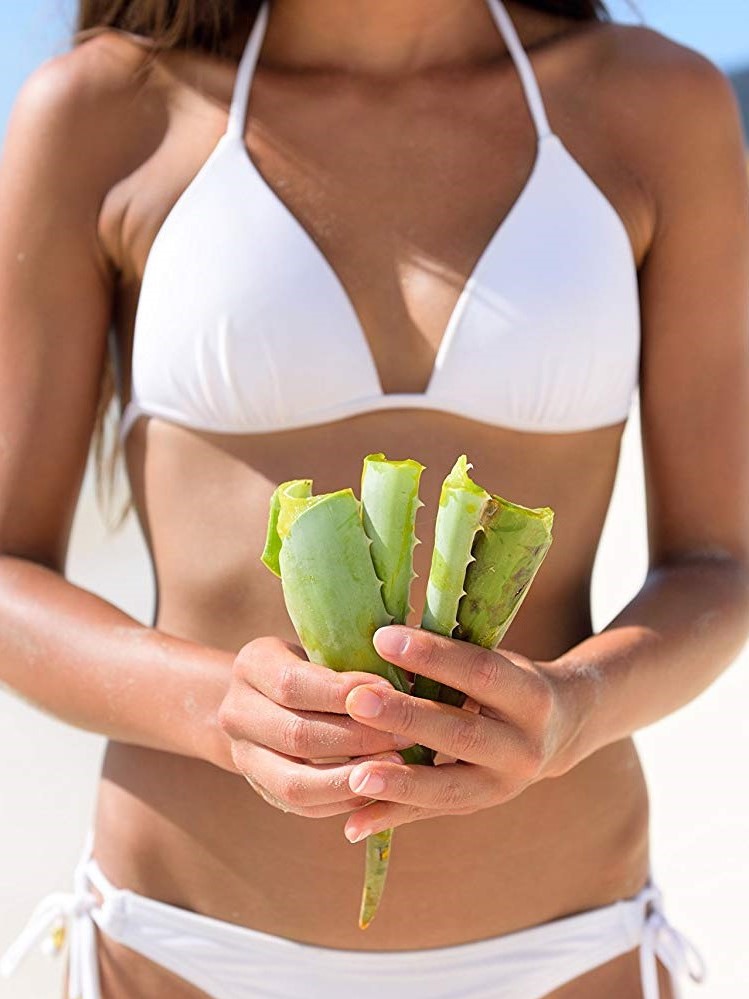Sunburns. We’ve (pretty much) all had at least one. We know that sunburns are bad because *ouch* but there’s a little more to it than that. Ever wondered exactly how the sun can cook your skin like a cheese pita on the wrong setting in the toaster-oven? We’ve got the rundown here:
☀️ The Process of a Sunburn
It all starts with UV radiation, which comes from not only the sun, but also tanning beds. Too much exposure (which can vary from person to person) sets forth a process that results in these 3 things:

- Damage to the skin’s DNA.
- Death of skin cells.
- Erythema, which is a fancy word for acute redness/inflammation of the skin. This is the actual burn that you can see on your skin. Sunburns are usually classified as first degree burns.
Why does that matter? Typically, we only think about item #3 above. However, we should be very concerned with every part of UV effects. Changes in the skin’s DNA and cell death are permanent and stay with us forever.
? Timing Matters
- Within 1 hour, skin cells release enzymes that cause inflammation, in an attempt to protect your skin from more UV exposure.
- Within 2 hours, damage to skin cells is visible.
- At 24 hours, you will see peak erythema.
- Damage continues for 72 hours.
? What Increases Risk of Acute Sunburn?

- Time of year. UVB rays are more prone to cause erythema, and they are much stronger in the spring and summer.
- Time of day. UV rays are more dangerous from 10:00 in the morning to 2:00 in the afternoon. Good rule of thumb: if your shadow is shorter than you are, seek sun protection!
- Cloudy days. This sounds counterintuitive, but UV rays penetrate straight through all clouds. This increases the risk for sunburn because people forget about protection on cool, cloudy days.
- Oily and/or wet skin. Skin that is wet from oils, sweat, and water is more likely to burn. That calls for extra protection while swimming!
- Children (and anyone who spends more time outdoors). Kids are more likely to pick up a sunburn due to the fact that they generally spend more time outside.
- Fair skin. In the last year, 50% of adults reported at least 1 sunburn, but among fair skinned folks only, that number jumps up to 65%.
- Products and medications. Many things can increase sun sensitivity including essential oils, antibiotics, anti-inflammatories like ibuprofen and naproxen, diuretics, retinoids, antifungals, oral contraceptives, and medications for diabetes, cholesterol, blood pressure, heart disease, and epilepsy.
? Got Burned? Now What?

Too much fun in the sun? It happens. Follow these steps to minimize further damage and begin the process of repairing your skin:
- Fluids, fluids, fluids. After a burn, your body draws water to the skin in order to help the healing process. Give your body extra fluids in order to prevent dehydration.
- Cool rules. Take a cool shower or cool bath (and toss in a bag of rooibos tea perhaps?) to soothe skin.
- Curb inflammation by taking an anti-inflammatory drug (as appropriate to the individual) and also eating anti-inflammatory foods like broccoli, turmeric, ginger, berries, salmon, leafy greens, avocado, green tea, and so much more. YUM!
- Blast free radicals by applying topical serums full of anti-oxidants and aloe. Also incorporate anti-oxidants in your diet like berries, dark chocolate, leafy greens, pecans, apples, and green tea. YUM!
- Throw shade – on yourself. Prevent further sun damage by staying indoors as much as possible. After an acute burn, wear sunscreen and/or cover the burned skin EVEN WHEN INDOORS. If you can read a book without a light on, ambient UV rays are still reaching your skin.